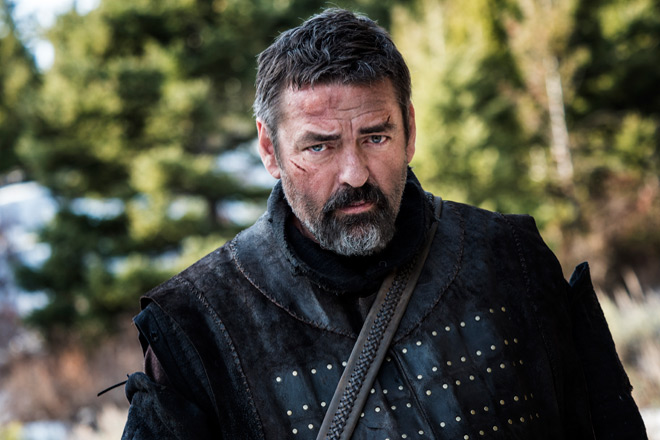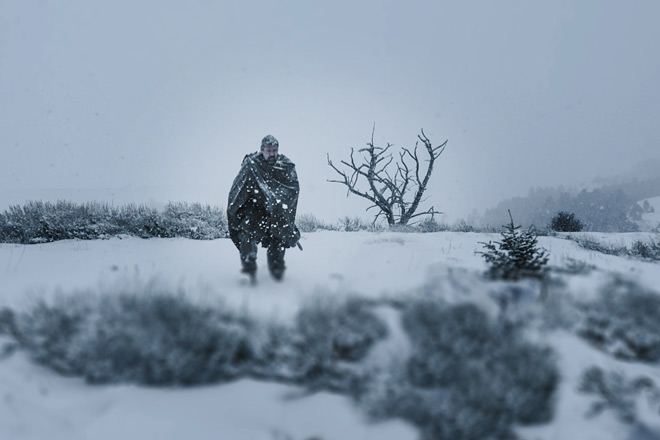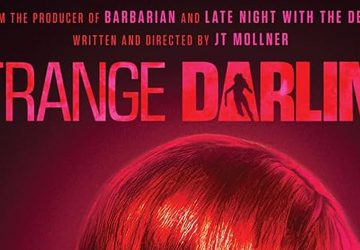Saying 1995’s Braveheart has historical inaccuracies is like saying it is a Hollywood film… pretty obvious. However, that film’s point was to highlight the then-obscure Scottish hero William Wallace, so it helped to take some artistic license. One of the more curious changes was taking away the bridge from Wallace’s victory at the Battle of Stirling Bridge. The open field and use of schiltrons made it look like a later, more famous battle fought and won by a later, more famous figure; the Battle of Bannockburn won by King Robert I of Scotland aka Robert the Bruce.
Set for release on VOD and digital platforms from April 24th, 2020 via Screen Media, the new film Robert the Bruce is not a literal sequel to Braveheart, though Angus MacFayden (Equilibrium 2002, Saw IV 2007) reprises his role from that film as the titular Bruce. Directed by Richard Gray (Summer Coda 2010, The Lookalike 2014) and written by MacFayden along with Eric Belgau (Murder on the Yellow Brick Road 2005, Keyeye the Movie 2008), the film chronicles the Bruce’s life from after his coronation to before reclaiming Scotland from the English.

It details how the Bruce failed to support Wallace in time, feuded with rival noble John Comyn (Jared Harris: Sherlock Holmes: A Game of Shadows 2011, Chernobyl series) and was beaten by the English sympathizers until he is left abandoned and outlawed. Yet, with the help of a peasant woman (Anne Hutchison: The Cabin in the Woods 2011, Spartacus series) and her family, he gains the support of the Scottish commoners, and the drive to reclaim Scotland from the English. Just in time for the 700th anniversary of the Declaration of Arbroath and the 25th anniversary of Braveheart’s US release, is Robert the Bruce Bannockburn-level victory?
Robert the Bruce is not angling to be the ironclad, historically accurate counterblast to Braveheart either. The film uses its own historical license here and there. Though whether the Bruce got his groove back from keen planning, a single-parent family or, a per a nursery rhyme, a spider in a cave is a matter for the history buffs.
Nonetheless, Scotophiles would be pleased with a cast of genuine Scots (MacFayden, Gianni Capaldi, Mhairi Calvey) on show, alongside mostly decent accents from the non-Scots. No Scots dialogue though, so there’s no blather about skelping a wee bairn roondaboot the lug for bein glaikit. It is all in regular English, so audiences do not have to worry about needing subtitles like some screenings of 1996’s Trainspotting did.

Most of the film was shot in Montana, and what was filmed in Scotland was affected by cost and the 2018 “Beast from the East” storm. Still, the film managed to include some iconic Scottish natural sights, like Glencoe and Skye’s Black Cuillins. Sharp eyes might be able to tell when the film shifts from Shire-side to Stateside, though this is not exactly a dealbreaker. It is just ironic that the Scottish sights shot between storms leave a stronger impression than the relatively peaceful plains of Montana.
All this aside, the big deal is how well the story holds up. One big mark against it is how little MacFayden’s Bruce appears in it. Most of the film is focused on Hutchison’s Morag, her nephews Carney (Brandon Lessard: Broken Ghost 2017) and Scot (Gabriel Bateman: Child’s Play 2019) and niece Iver (Talitha Eliana Bateman: Geostorm 2017). The film seems to initially use them to build up Bruce’s legend through them, opening with Morag telling stories about him. However, it leads to the first hour of the film feeling dry and even boring.
The second hour improves upon things, as the drama between Bruce and the family is more engaging than either on their own. MacFayden finally has more to do and say as the title character, getting some nice scenes with Hutchison, Lessard and the Batemans. The film is at its strongest when it shows the Bruce bonding with the family and earning their trust. The surrogate-Dad montage is particularly charming when contrasted with earlier scenes of Scot showing enmity for the Bruce.

Overall, Robert the Bruce would have been much stronger if this build-up was spread across the second act instead of the first half of the second hour. It would have been a more effective way of getting the audience to bond with the characters and made its ending (and twist) more effective and touching. As it is, Robert the Bruce is a noble film with some fair performances, cinematography and direction. Unfortunately, it is let down by its pacing and writing. Thus, for these reasons, Cryptic Rock gives Robert the Bruce 2.5 out of 5 stars.





